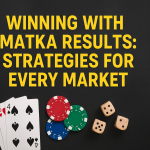In today’s digital landscape, influencer marketing has emerged as one of the most effective strategies for eCommerce businesses to reach their target audience, boost brand awareness, and drive conversions. With millions of users engaging with social media platforms daily, influencers play a significant role in shaping consumer decisions. From product recommendations to detailed reviews, influencer marketing leverages the trust and authenticity of content creators to enhance brand credibility.
This article explores the importance of influencer marketing in eCommerce success, key benefits, strategies for implementation, and how to measure its impact.
Why Influencer Marketing Matters in eCommerce
Influencer marketing has become a crucial component of modern eCommerce strategies. Unlike traditional advertising, which can often seem intrusive, influencer marketing integrates seamlessly into content that consumers already engage with. Here are some reasons why influencer marketing is essential for eCommerce success:
- Increased Brand Awareness: Partnering with influencers allows businesses to reach a broader audience. Influencers have established followers who trust their recommendations, making it easier for brands to gain exposure.
- Authentic Product Promotion: Influencers create genuine and engaging content that showcases products in a relatable way, increasing credibility and trust among their followers.
- Higher Conversion Rates: Consumers are more likely to purchase products recommended by influencers they admire. This translates to increased sales and customer acquisition for eCommerce brands.
- Cost-Effective Marketing Strategy: Compared to traditional advertising channels, influencer marketing offers a higher return on investment (ROI) due to its targeted reach and engagement.
- Improved SEO and Website Traffic: Influencer collaborations often include backlinks and social media mentions, which drive traffic to eCommerce websites and improve search engine rankings.
Types of Influencers in eCommerce Marketing
Not all influencers are the same. Depending on their follower count and niche, eCommerce brands can collaborate with different types of influencers:
1. Mega-Influencers (1M+ followers)
- Celebrities or widely recognized social media personalities.
- Ideal for brand awareness campaigns but often come at a high cost.
2. Macro-Influencers (100K–1M followers)
- Well-established content creators with a significant following.
- Offer a balance between reach and engagement.
3. Micro-Influencers (10K–100K followers)
- Niche influencers with highly engaged audiences.
- Provide authentic recommendations and have a stronger impact on purchasing decisions.
4. Nano-Influencers (1K–10K followers)
- Everyday consumers who share their personal experiences.
- Ideal for community-driven marketing and grassroots campaigns.
How to Build a Successful Influencer Marketing Strategy for eCommerce
To maximize the benefits of influencer marketing, eCommerce businesses must develop a well-planned strategy. Here are the key steps:
1. Define Your Goals and Target Audience
Before reaching out to influencers, brands need to identify their marketing objectives. Common goals include:
- Increasing brand awareness
- Driving website traffic
- Boosting sales and conversions
- Growing social media engagement
2. Find the Right Influencers
Selecting the right influencers is crucial for a successful campaign. Brands should consider:
- Relevance: Does the influencer’s content align with your brand values?
- Engagement Rate: Are their followers actively engaging with their posts?
- Authenticity: Does the influencer have a genuine connection with their audience?
- Past Collaborations: Have they worked with similar brands successfully?
3. Choose the Right Platform
Different social media platforms cater to different audience demographics:
- Instagram & TikTok: Ideal for visual product showcases and influencer collaborations.
- YouTube: Best for in-depth product reviews and tutorials.
- Facebook & Twitter: Useful for targeted advertising and brand engagement.
- Pinterest: Great for lifestyle brands and eCommerce stores.
4. Create Engaging Campaigns
Brands should work with influencers to create compelling content that resonates with their audience. Popular influencer marketing campaigns include:
- Product reviews and unboxings
- Giveaways and contests
- Discount codes and affiliate promotions
- Live Q&A sessions and tutorials
5. Track Performance and ROI
Measuring the success of an influencer marketing campaign is essential to ensure a positive ROI. Key performance indicators (KPIs) to monitor include:
- Engagement rate (likes, shares, comments)
- Website traffic and referral sources
- Conversion rates and sales generated from influencer links
- Brand mentions and hashtags
Success Stories: Brands Winning with Influencer Marketing
Several eCommerce brands have successfully leveraged influencer marketing to grow their businesses. Here are a few examples:
- Glossier – The beauty brand built its empire through micro-influencer collaborations and user-generated content.
- Gymshark – The fitness apparel brand grew exponentially by partnering with fitness influencers on Instagram and YouTube.
- Daniel Wellington – This watch brand utilized influencer partnerships and social media campaigns to gain global recognition.
Common Mistakes to Avoid in Influencer Marketing
While influencer marketing is effective, brands must avoid these common pitfalls:
- Choosing the Wrong Influencers: Collaborating with influencers who lack brand alignment can lead to low engagement and wasted budget.
- Focusing Only on Follower Count: Engagement rate is more important than the number of followers.
- Ignoring Long-Term Relationships: One-time collaborations may not be as impactful as long-term influencer partnerships.
- Not Setting Clear Guidelines: Lack of clear communication can result in content that does not align with brand messaging.
The Future of Influencer Marketing in eCommerce
Influencer marketing is continuously evolving, with emerging trends shaping its future:
- AI-Driven Influencer Discovery: AI tools help brands identify influencers with high engagement and authenticity.
- Rise of Nano-Influencers: Smaller influencers with niche audiences are gaining popularity due to their genuine content.
- Live Shopping & Video Content: Platforms like TikTok and Instagram Live are integrating eCommerce features for real-time shopping.
- Increased Focus on Authenticity: Consumers prefer real, unscripted content over highly polished advertisements.
The Role of eCommerce Packaging
eCommerce packaging plays a vital role in shaping the customer experience. It is not just about protecting products during transit; it is also a branding tool that enhances customer satisfaction. Well-designed packaging can create memorable unboxing experiences, encourage social media sharing, and reinforce brand identity. Additionally, sustainable and eco-friendly packaging is becoming increasingly important, as environmentally conscious consumers prefer businesses that prioritize sustainability. By investing in high-quality and visually appealing packaging, eCommerce brands can leave a lasting impression and boost customer loyalty.
Conclusion
Influencer marketing has become a powerful tool for eCommerce businesses looking to boost brand awareness, drive traffic, and increase sales. By partnering with the right influencers, creating engaging content, and tracking performance, brands can maximize their influencer marketing efforts. As social media continues to evolve, staying ahead of trends and leveraging influencer partnerships will be essential for sustained eCommerce success.
For businesses looking to scale their online presence, influencer marketing is no longer optional—it’s a necessity. By implementing a strategic approach and fostering genuine collaborations, brands can harness the full potential of influencer marketing to thrive in the competitive eCommerce landscape.








